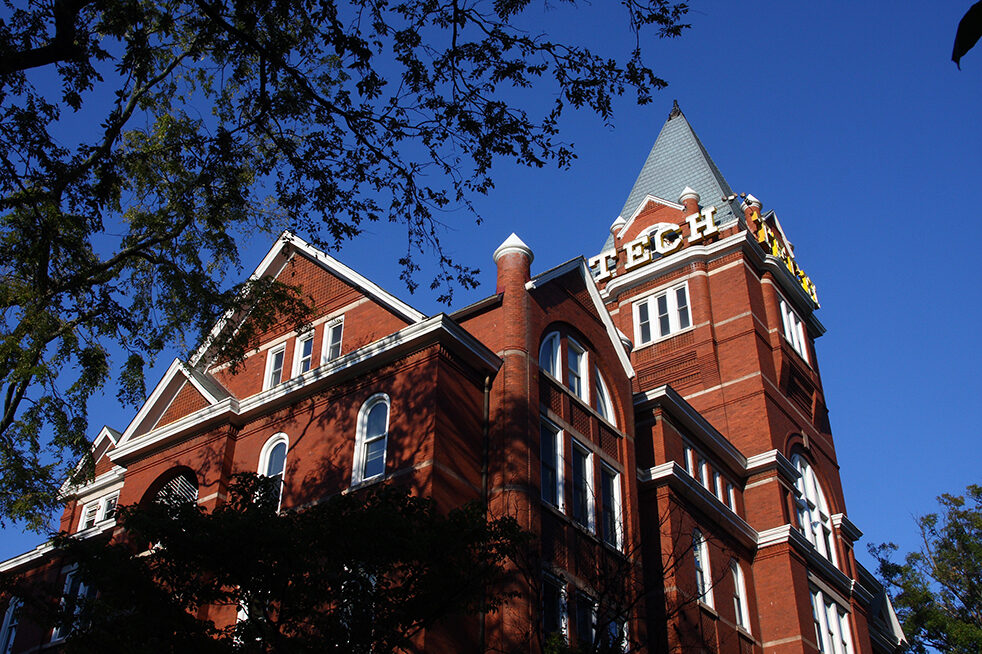The National Aeronautics and Space Association (NASA) has selected a team of Tech researchers to pioneer a lunar research project to support their upcoming manned voyage to the Moon. Dr. Thomas Orlando of the School of Chemistry and Biochemistry at the Institute will lead the Center for Lunar Environment and Volatile Exploration Research (CLEVER), which aims to characterize the lunar environment and its makeup of volatile particles.
The Center’s research is highly interdisciplinary, including professors from the School of Chemistry and Biochemistry, the Woodruff School of Mechanical Engineering, the School of Physics and the School of Earth and Atmospheric Sciences as central project leaders. Dr. Micah Schaible is the lead for the science outreach and public engagement portion of the grant.
“Our stake in this [grant] is to characterize the environment of the Moon as thoroughly as possible so that future astronaut or robotic activities on the moon are done efficiently and safely,” says Schaible.
“The overarching themes are to better understand how radiation from the sun affects the molecular volatile content on the Moon, how they move around the moon, and ultimately, what risks and hazards are associated with harvesting those volatiles for something like a lunar base in the future.”
Their research will aid in preparations for the Artemis Program, which aims to have astronauts on the Moon by 2024. Artemis is the first program to include a manned mission to the Moon since that of Apollo in 1969 and will send the first woman and person of color there on its voyage. CLEVER’s research about lunar volatiles, or dust, will be instrumental to the program, as lunar dust is detrimental to the health of living quarters, research instruments and the astronauts themselves.
According to NASA Science, lunar dust “is extremely fine and abrasive, almost like powdered glass. Astronauts on several Apollo missions found that it clung to everything and was almost impossible to remove; once tracked inside the Lunar Module, some of it easily became airborne, irritating lungs and eyes.”
This grant is a subsection of the Solar System Exploration Research Virtual Institute (SSERVI), a branch of NASA that focuses on exploration of Near-Earth Asteroids, the Moon and Mars and its celestial bodies. CLEVER and four other grant recipients under SSERVI will specifically research different aspects of the Moon and its processes. The Research Institute will hold various interdisciplinary research forums and symposiums over the five-year grant period to encourage high-level collaboration amongst the research teams.
“We will be at the NASA Exploration Science Forum each year, with this year’s taking place in mid-July. There, we will present our research to SSERVI and make connections with other groups. Additionally, each principal investigator will present findings at conferences more adjacent to their fields. For example, Dr. Linsey (ME) focuses on instrument development, and she attended the biannual Lunar Surface Innovation Consortia that focuses on tools and instruments that could be used by Artemis astronauts.”
In addition to interdisciplinary involvement at Tech, CLEVER plans to provide opportunities for Tech students to do research within their Center. They will offer most positions to graduate students but plan to open a few positions to undergraduate students as well. The research students will have the opportunity to study under multiple mentors to promote interdisciplinary research skills in their respective fields.
“Over the course of the 5-year research program,” says Shaible, “we have 30 student years of available research funding. Each of the PIs will share a graduate student… which gives the benefit of a more well-rounded student. They are the ones that will really be doing the hard work, and I am really thrilled that we are involving so many university students in this collaboration.”
Dr. Schaible says that, aside from Tech involvement, CLEVER plans to expand its education to Atlanta’s youth.
“We do have a K-12 outreach program as well,” he says. “NASA really likes the idea of ‘building bridges’, and we really want to accomplish this by educating high school and middle school students. We are developing age-appropriate content that is lunar research-related and showing them what it looks like to be a lunar scientist at a young age.”
This outreach plan aligns with a significant pillar of SSERVI’s mission statement, as they seek to “train the next generation of explorers and encourage global public engagement.” Similarly, they state that one of the central goals of the Artemis Program is to inspire a new generation of scientists by sending humans to the Moon.
Tech professors’ research will be integral to NASA’s understanding of the Moon’s natural processes, and their findings will affect the long-term health of the astronauts on Artemis and the equipment they bring to the Moon. Furthermore, research from Artemis and SSERVI is a phase of NASA’s long-term plan to make human contact with Mars. They plan to apply elements of lunar research there, exploring opportunities like resource extraction and sustained human life on the planet. Dr. Schaible advises interested students to stay alert for possible research opportunities in the coming terms.
